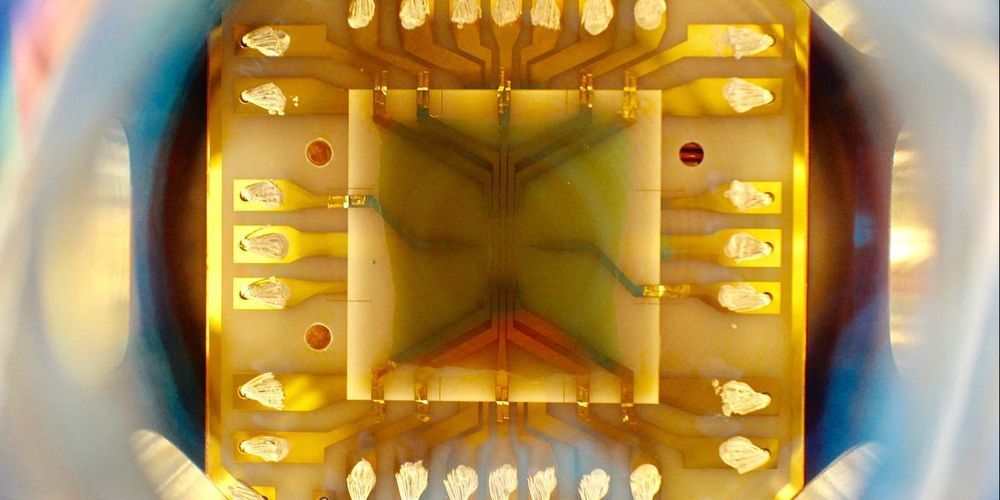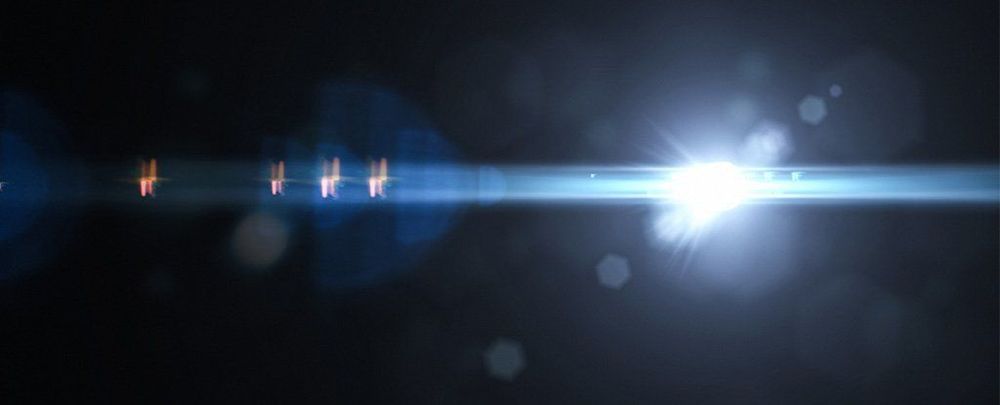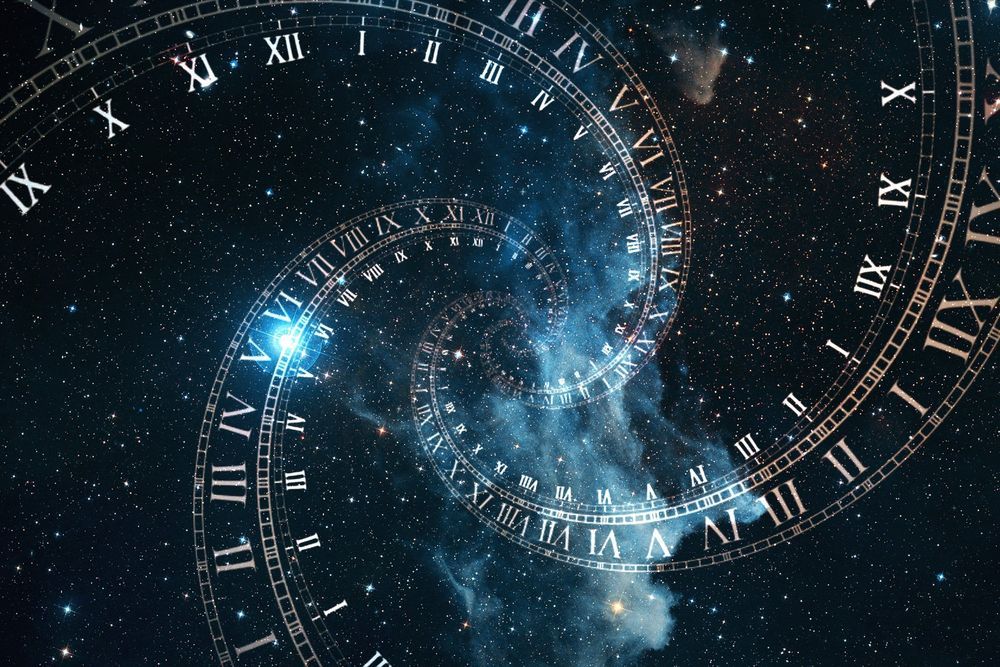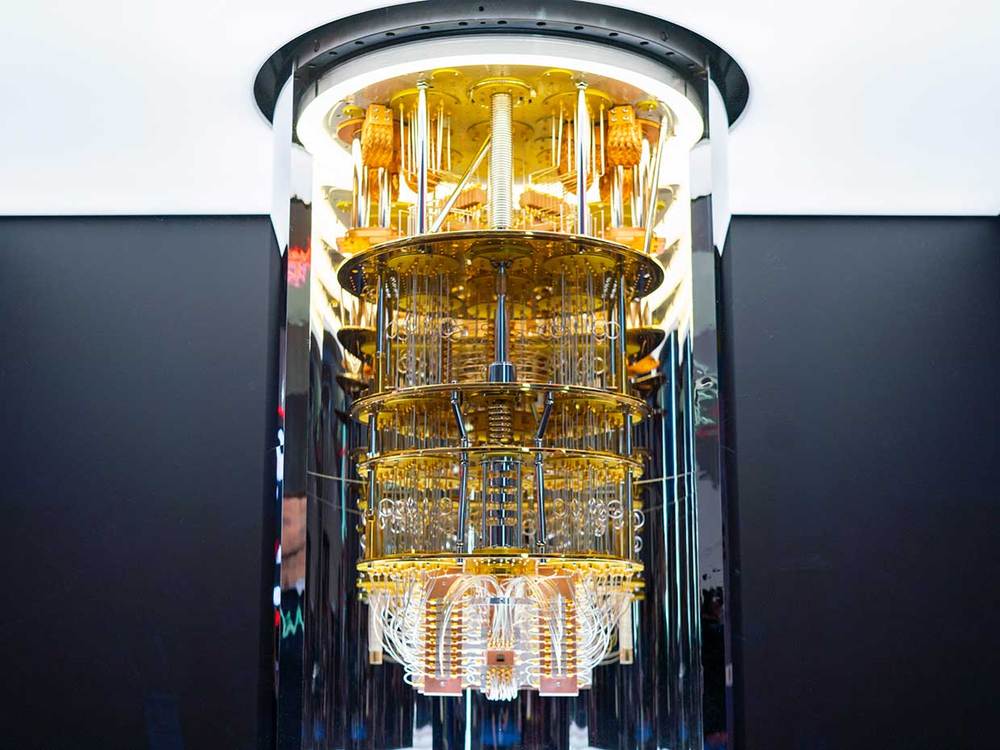It’s exotic, incredibly cold stuff.



Patrick Windpassinger and his team demonstrate how light stored in a cloud of ultra-cold atoms can be transported by means of an optical conveyor belt.
A team of physicists led by Professor Patrick Windpassinger at Johannes Gutenberg University Mainz (JGU) has successfully transported light stored in a quantum memory over a distance of 1.2 millimeters. They have demonstrated that the controlled transport process and its dynamics has only little impact on the properties of the stored light. The researchers used ultra-cold rubidium-87 atoms as a storage medium for the light as to achieve a high level of storage efficiency and a long lifetime.
“We stored the light by putting it in a suitcase so to speak, only that in our case the suitcase was made of a cloud of cold atoms. We moved this suitcase over a short distance and then took the light out again. This is very interesting not only for physics in general, but also for quantum communication, because light is not very easy to ‘capture’, and if you want to transport it elsewhere in a controlled manner, it usually ends up being lost,” said Professor Patrick Windpassinger, explaining the complicated process.

We stored the light by putting it in a suitcase so to speak, only that in our case the suitcase was made of a cloud of cold atoms,” says physicist Patrick Windpassinger from Mainz University in Germany. “We moved this suitcase over a short distance and then took the light out again.
The storage and transfer of information is a fundamental part of any computing system, and quantum computing systems are no different – if we’re going to benefit from the speed and security of quantum computers and a quantum internet, then we need to figure out how to shift quantum data around.
One of the ways scientists are approaching this is through optical quantum memory, or using light to store data as maps of particle states, and a new study reports on what researchers are calling a milestone in the field: the successful storage and transfer of light using quantum memory.
The researchers weren’t able to transfer the light very far – just 1.2 millimetres or 0.05 inches – but the process outlined here could form the foundation of the quantum-powered computers and communication systems of the future.

Optical computing, which uses photons instead of electrons, has been one of the great promises of this field for decades.
According to Moore’s law —actually more like a forecast, formulated in 1965 by Intel co-founder Gordon Moore— the number of transistors in a microprocessor doubles about every two years, boosting the power of the chips without increasing their energy consumption. For half a century, Moore’s prescient vision has presided over the spectacular progress made in the world of computing. However, by 2015, the engineer himself predicted that we are reaching a saturation point in current technology. Today, quantum computing holds out hope for a new technological leap, but there is another option on which many are pinning their hopes: optical computing, which replaces electronics (electrons) with light (photons).
The end of Moore’s law is a natural consequence of physics: to pack more transistors into the same space they have to be shrunk down, which increases their speed while simultaneously reducing their energy consumption. The miniaturisation of silicon transistors has succeeded in breaking the 7-nanometre barrier, which used to be considered the limit, but this reduction cannot continue indefinitely. And although more powerful systems can always be obtained by increasing the number of transistors, in doing so the processing speed will decrease and the heat of the chips will rise.
The hybridization of electronics and optics
Hence the promise of optical computing: photons move at the speed of light, faster than electrons in a wire. Optical technology is also not a newcomer to our lives: the vast global traffic on the information highways today travels on fibre optic channels, and for years we have used optical readers to burn and read our CDs, DVDs and Blu-Ray discs. However, in the guts of our systems, the photons coming through the fibre optic cable must be converted into electrons in the microchips, and in turn these electrons must be converted to photons in the optical readers, slowing down the process.

Extreme events occur in many observable contexts. Nature is a prolific source: rogue water waves surging high above the swell, monsoon rains, wildfire, etc. From climate science to optics, physicists have classified the characteristics of extreme events, extending the notion to their respective domains of expertise. For instance, extreme events can take place in telecommunication data streams. In fiber-optic communications where a vast number of spatio-temporal fluctuations can occur in transoceanic systems, a sudden surge is an extreme event that must be suppressed, as it can potentially alter components associated with the physical layer or disrupt the transmission of private messages.
Recently, extreme events have been observed in quantum cascade lasers, as reported by researchers from Télécom Paris (France) in collaboration with UC Los Angeles (USA) and TU Darmstad (Germany). The giant pulses that characterize these extreme events can contribute the sudden, sharp bursts necessary for communication in neuromorphic systems inspired by the brain’s powerful computational abilities. Based on a quantum cascade laser (QCL) emitting mid-infrared light, the researchers developed a basic optical neuron system operating 10,000× faster than biological neurons. Their report is published in Advanced Photonics.

We know that our understanding of reality is pretty biased. Our senses, our cultures, and our knowledge shape how we see the world. And if you think that science will always give you objective reality, you might want to reconsider.
Physicists have finally been able to test a thought experiment first proposed in 1961 by Nobel Prize winner Eugen Wigner. The experiment is known as “Wigner’s Friend” and the setup is not too complicated. You start with a quantum system that has two states in superposition, which means that until you measure it, both states exist at the same time. For this example, a photon’s polarisation (the axis it spins on) is both horizontal and vertical.
Wigner’s friend is in the lab performing the experiment and once they measure it, the system will collapse and the photon will be fixed into one of those two states. But for Wigner, who is outside the lab unaware of the result of the measurement, the quantum system (which, importantly, also includes the lab) is still in superposition. Despite contradictory results, they are both correct. (This is similar to Schrödinger’s cat, a thought experiment also about superposition, if Schrödinger and his cat-in-a-box were also in a box.) So, two objective realities, Wigner’s and Wigner’s friend’s, appear to coexist. And this is a problem.

“Whenever we have developed better clocks, we’ve learned something new about the world,” said Alexander Smith, an assistant professor of physics at Saint Anselm College and adjunct assistant professor at Dartmouth College, who led the research as a junior fellow in Dartmouth’s Society of Fellows. “Quantum time dilation is a consequence of both quantum mechanics and Einstein’s relativity, and thus offers a new possibility to test fundamental physics at their intersection.”
A phenomenon of quantum mechanics known as superposition can impact timekeeping in high-precision clocks, according to a theoretical study from Dartmouth College, Saint Anselm College and Santa Clara University.
Research describing the effect shows that superposition — the ability of an atom to exist in more than one state at the same time — leads to a correction in atomic clocks known as “quantum time dilation.”
The research, published today (October 23, 2020) in the journal Nature Communications, takes into account quantum effects beyond Albert Einstein’s theory of relativity to make a new prediction about the nature of time.

Albert Einstein’s twin paradox is one of the most famous thought experiments in physics. It postulates that if you send one of two twins on a return trip to a star at near light speed, they will be younger than their identical sibling when they return home. The age difference is a consequence of something called time dilation, which is described by Einstein’s special theory of relativity: the faster you travel, the slower time appears to pass.
But what if we introduce quantum theory into the problem? Physicists Alexander Smith of Saint Anselm College and Dartmouth College and Mehdi Ahmadi of Santa Clara University tackle this idea in a study published today in the journal Nature Communications. The scientists imagine measuring a quantum atomic clock experiencing two different times while it is placed in superposition—a quirk of quantum mechanics in which something appears to exist in two places at once. “We know from Einstein’s special theory of relativity that when a clock moves relative to another clock, the time shown on it slows down,” Smith says. “But quantum mechanics allows you to start thinking about what happens if this clock were to move in a superposition of two different speeds.”
Physicists describe a way to merge quantum theory with Einstein’s special theory of relativity—and even a method to test it experimentally.
With room temperature superconductors now we can have room temperature quantum computers.
Yet another hurdle to sustain quantum computing has been crossed.
